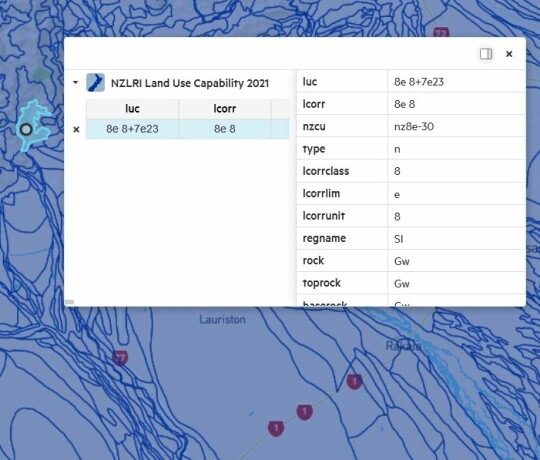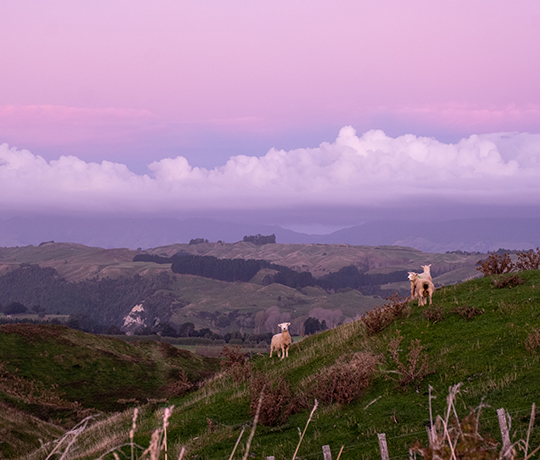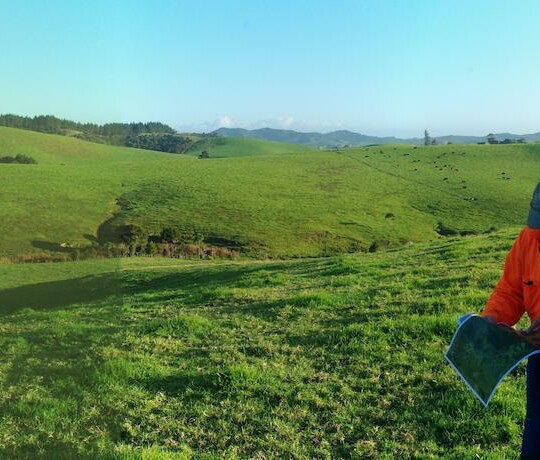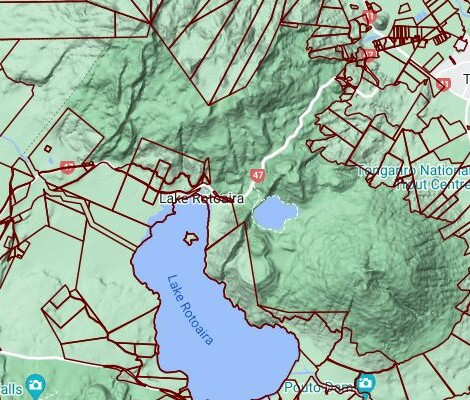LUC documentation by region
This page is your key pathway to the regional LUC resources we have available
Select a region
Click on the map, or select a region from the list below.
01 Northland
- Harmsworth, G.R. 1996. Land use capability classification of the Northland region: a report to accompany the second edition, New Zealand land resource inventory. Landcare Research Science Series 9.
https://doi.org/10.7931/DL1-LRSS-9
Please note: The 1st edition legend is not being listed here as all information has been superseded by the 2nd edition bulletin. However, 1st edition documentation can be provided upon request. - Hicks, D. & Vujcich, V. 2017. Farm-scale land use capability classification for Auckland. Auckland Council technical report, TR2017/016.
02 Waikato
- Walsh, S.D. 1977. Waikato Region: Land Use Capability Extended Legend. National Water and Soil Conservation Organisation;
1st edition extended legend; 20 additional LUC units were provided by Jessen (1987) - Jessen, M.R. 1987. Waikato LUC Units Correlated. National Water and Soil Conservation Organisation; MS Word document containing additional LUC units for the Waikato region. Please note: Web coverage (LRIS Portal) uses the upgraded legend.
- Waikato Region: Land Use Capability Extended Legend (xlxs file)
03 Coromandel
- Trustum, N.A. 1974. Coromandel - Gt. Barrier Island Extended Legend (1st edition); note that a 2nd edition legend was established but never used in published mapping.
- Coromandel - Gt Barrier: Land Use Capability Extended Legend (xlxs file)
- Jessen, M.R.; McLeod, M. 1994. Land-Use Capability Classification of Coromandel Peninsula 1994 - Part 1, Attribute Classifications; note that legend was established but never used in published mapping.
- Jessen, M.R.; McLeod, M. 1994. Land-Use Capability Classification of Coromandel Peninsula 1994 - Part 2, Extended Legend; note that legend was established but never used in published mapping.
04 Bay of Plenty - Volcanic Plateau
- Blaschke, P.M. 1985. Land Use Capability classification and land resources of the Bay of Plenty–Volcanic Plateau Region: a bulletin to accompany New Zealand Land Resource Inventory Worksheets. Water and Soil Miscellaneous Publication 89. 221 p.
- Steel, K.W. 1979. Bay of Plenty - Volcanic Plateau Region: Land Use Capability Extended Legend. 1st edition. National Water and Soil Conservation Organisation
- Bay of Plenty - Volcanic Plateau Region: Land Use Capability Extended Legend (xlxs file)
- NWASCO (1975). Land use capability assessment of the Kaituna River catchment. Land Use Capability Bulletin 2. Report (3 MB) | Maps (6 MB).
05 Eastern Bay of Plenty
- Page, M.J. 1975. Eastern Bay of Plenty Region: Land Use Capability Extended Legend. National Water and Soil Conservation Organisation
1st edition; applicable area reduced, margins incorporated into 2nd edition for Gisborne - East Coast region. - Eastern Bay of Plenty: Land Use Capability Extended Legend (xlxs file)
06 Gisborne - East Coast
- Jessen, M.R.; Crippen, T.F.; Page, M.J.; Rijkse, W.C.; Harmsworth, G.R.; McLeod, M. 1999. Land use capability classification of the Gisborne - East Coast region: a report to accompany the second edition, New Zealand land resource inventory. Landcare Research Science Series 21
https://doi.org/10.7931/DL1-LRSS-21
Please note: 1st edition legend is not being listed here as all information has been superseded by the 2nd edition bulletin above. However, 1st edition documentation can be provided upon request.
07 Northern Hawke's Bay
- Page, M.J. 1988. Land Use Capability Classification of the Northern Hawke's Bay Region: a bulletin to accompany the New Zealand Land Resource Inventory Worksheets. Water & Soil Miscellaneous Publication 109.
- Page, M.J. 1976. Northern Hawkes Bay Region: Land Use Capability Extended Legend. National Water and Soil Conservation Organisation; 1st edition; applicable area reduced, incorporated into 2nd edition for Gisborne - East Coast.
- Northern Hawkes Bay Region: Land Use Capability Extended Legend (xlxs file)
08 Southern Hawke's Bay - Wairarapa
- Noble, K.E. 1985. Land Use Capability classification of the Southern Hawke's Bay–Wairarapa Region: a bulletin to accompany New Zealand Land Resource Inventory worksheets. Water and Soil Miscellaneous Publication 74. 127 p.
- Noble, K.E. 1988. Southern Hawke's Bay - Wairarapa Region: Land Use Capability Extended Legend. 1st edition. National Water and Soil Conservation Organisation
Please note that this is the 1988 version which contains limited revision of the 1979 original. - Southern Hawkes Bay - Wairarapa Region: Land Use Capability Extended Legend (xlsx file).
09 Wellington
- Page, M.J. 1995. Land use capability classification of the Wellington region: a report to accompany the second edition, New Zealand land resource inventory. Landcare Research Science Series 6
https://doi.org/10.7931/DL1-LRSS-6
Please note: 1st edition legend is not being listed here as all information has been superseded by the 2nd edition bulletin above. However, 1st edition documentation can be provided upon request.
10 Taranaki - Manawatu
- Fletcher, J.R. 1987. Land Use Capability Classification of the Taranaki Manawatu Region. Water and Soil Miscellaneous Publication 110.
- Fletcher, J.R. 1981. Taranaki - Manawatu Region: Land Use Capablity Extended Legend. 1st edition. National Water and Soil Conservation Organisation.
- Taranaki - Manawatu Region: Land Use Capability Extended Legend (xlsx file).
11 Marlborough
- Lynn, I.H. 1996. Land use capability classification of the Marlborough region: a report to accompany the second edition, New Zealand land resource inventory. Landcare Research Science Series 12
https://doi.org/10.7931/DL1-LRSS-6
Please note that mapped area excludes the Marlborough Sounds but includes part Kaikoura District. - NWASCO (1971). Land use capability assessment of the Upper Waihopai River catchment, Marlborough, New Zealand. Land Use Capability Bulletin 3. Report (2.5 MB) | Maps (2.8 MB).
- NWASCO (1973). Recommended conservation land use of the Awatere River Catchment, Marlborough, South Island, New Zealand. Land Use Capability Bulletin 5. Report (pdf, 8 MB) | Maps (pdf, 9 MB)
12 South Island
- van Berkel, P. 1983 (ed). The South Island Land Use Capability Extended Legend for the New Zealand Land Resource Inventory. National Water and Soil Conservation Authority. Edition 2. (draft 9)
Please note: 1st edition coverage includes the Marlborough Sounds. A4 format legend (Van Berkel 1983) records areas, percentages and dominant inventory codes per LUC unit. - Pricket, R.C. 1978. South Island: Land Use Capability Extended Legend. National Water and Soil Conservation Organisation
- NWASCO (1966). Land use capability survey of the Mararoa River Catchment, Southland, New Zealand. Land Use Capability Bulletin 1. Report (pdf, 5 MB) | Maps (pdf, 4 MB)
- NWASCO (1972). Recommended conservation land use of the West Coast Region New Zealand. Land Use Capability Bulletin 4. Report (pdf, 4 MB) | Maps (pdf, 10MB)




